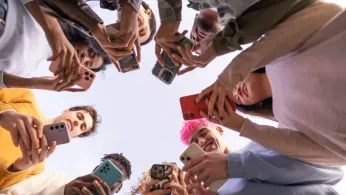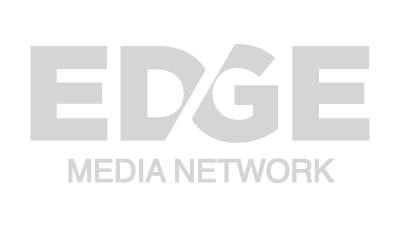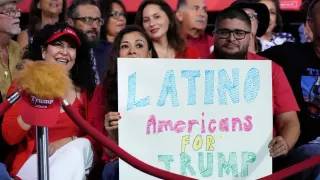
4 hours ago
The Queerest Corners of TikTok: Inside the Algorithmic Gay Bar
READ TIME: 3 MIN.
For millions of LGBTQ+ people, TikTok is more than a social media app—it’s a digital gathering place, a stage for identity, and sometimes, a refuge from offline hostility. The platform’s algorithm, engineered to surface content tailored to individual interests, has unwittingly created what many describe as an “algorithmic gay bar,” where queer creators and viewers mingle in spaces curated by opaque mathematical formulas. But as TikTok’s popularity surges, so do questions about who controls the narrative, whose stories are amplified, and who gets left outside the virtual velvet rope.
LGBTQ+ TikTokers have long noticed that the platform’s algorithm appears to “build a profile” of their identities based on posts they engage with and share, ultimately determining what content they see and what they can post themselves . This process, sometimes described by users as the “Identity Strainer Theory,” means the algorithm classifies queer users into normative categories, often pigeonholing them while simultaneously privileging content that matches mainstream ideas of queerness .
As a result, TikTok’s algorithm can both empower and restrict LGBTQ+ self-expression. For some, the sense of discovery—finding other users who share their experiences, humor, or politics—feels liberating. Hashtags like #tiktokmademegay and viral trends have enabled queer youth to explore aspects of their identity in ways that may not be possible offline .
Yet, for many marginalized creators, the algorithm is also a gatekeeper. Content deemed “too sensitive” or non-normative can be hidden or removed, leaving users feeling censored and excluded . This tension is especially acute for transgender people, nonbinary individuals, and those whose content challenges established norms of gender and sexuality.
Recent studies and advocacy reports reveal that TikTok’s moderation systems, powered by artificial intelligence (AI), often reinforce systemic discrimination rather than dismantle it . Researchers using critical queer theory and feminist standpoint theory argue that moderation algorithms and corporate policies frequently erase non-conforming identities and fail to account for the intersectional realities of queer life .
GLAAD’s 2025 Social Media Safety Index (SMSI) found that TikTok, while scoring higher than other platforms for explicit protections against hate, harassment, misgendering, and deadnaming, still falls short in safeguarding LGBTQ+ privacy and expression . The report highlights that wrongful content removal and demonetization remain persistent problems, and calls for TikTok to be more transparent with its moderation practices and enforcement actions .
The consequences are not abstract. Media Matters for America found that TikTok’s algorithm can inadvertently expose queer youth to homophobic and transphobic content, amplifying online harms . Transgender and nonbinary users describe feeling surveilled and vulnerable, especially as moderation systems sometimes fail to detect hate speech or, worse, associate hateful terms with marginalized identities .
2025 saw significant changes in social media safety policies, with TikTok’s competitors rolling back protections for LGBTQ+ people. Meta, for instance, revised its hate speech policy to permit references to LGBTQ+ people as “abnormal” and “mentally ill” and adopted language that echoes right-wing anti-trans tropes . YouTube quietly removed “gender identity” from its protected categories, further eroding online safety for transgender people and other marginalized groups .
Against this backdrop, TikTok’s relatively stronger policies on hate and harassment stand out, but the platform’s lack of transparency on content removal and account bans leaves many creators with unanswered questions and a sense of precarity . Advocates urge TikTok and all platforms to publish detailed data on moderation, provide inclusive training for moderators, and work with independent researchers to ensure fair treatment of all users .
Community responses have been creative and resilient. Queer TikTokers have formed micro-communities, used coded language, and mobilized collective action through hashtags and collaborations to resist algorithmic silencing . Some creators, like @shaeitaintsoo, use their platforms to educate others about LGBTQ+ issues and advocate for safer digital spaces .
Looking ahead, LGBTQ+ digital safety and inclusion remain urgent priorities. GLAAD’s recommendations for TikTok and its competitors are clear: reinforce protections against hate and misinformation, enhance transparency, and prioritize human review in moderation processes . Companies must also commit to safeguarding user privacy, minimizing surveillance-based advertising, and promoting respectful behavior online .
The “algorithmic gay bar” of TikTok is both a testament to queer ingenuity and a reminder of the persistent structural barriers to full digital citizenship. As platforms evolve, the voices and experiences of LGBTQ+ users—especially those at the intersection of multiple marginalized identities—must be centered in conversations about technology, safety, and expression. Only then can the queerest corners of TikTok truly be a space where everyone can dance, speak, and belong.






